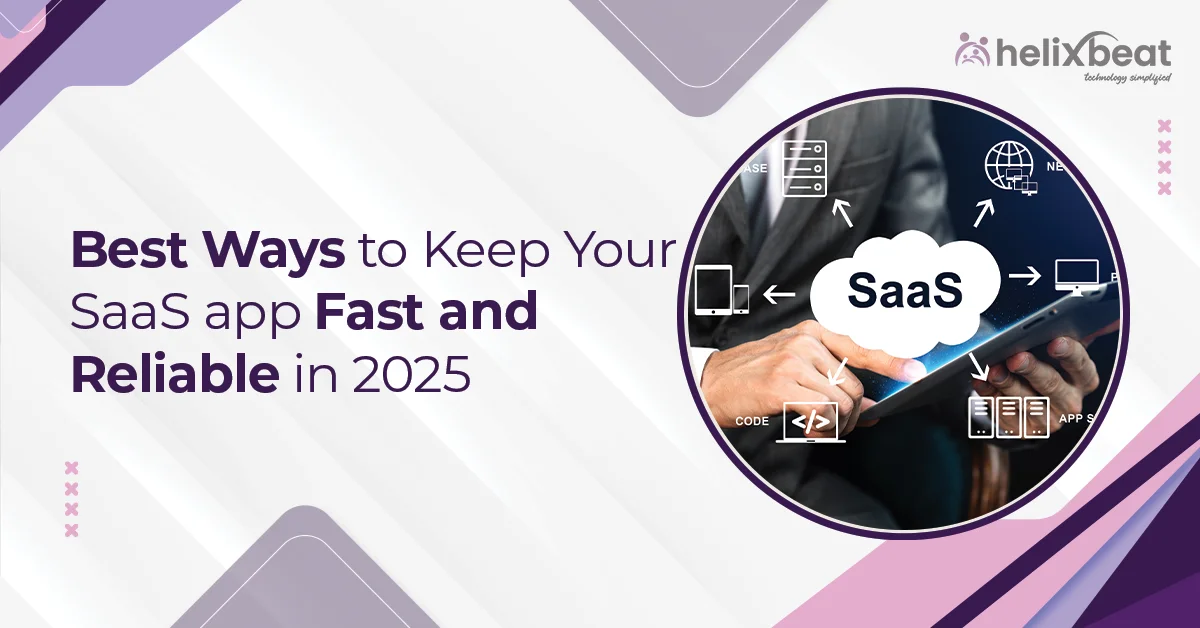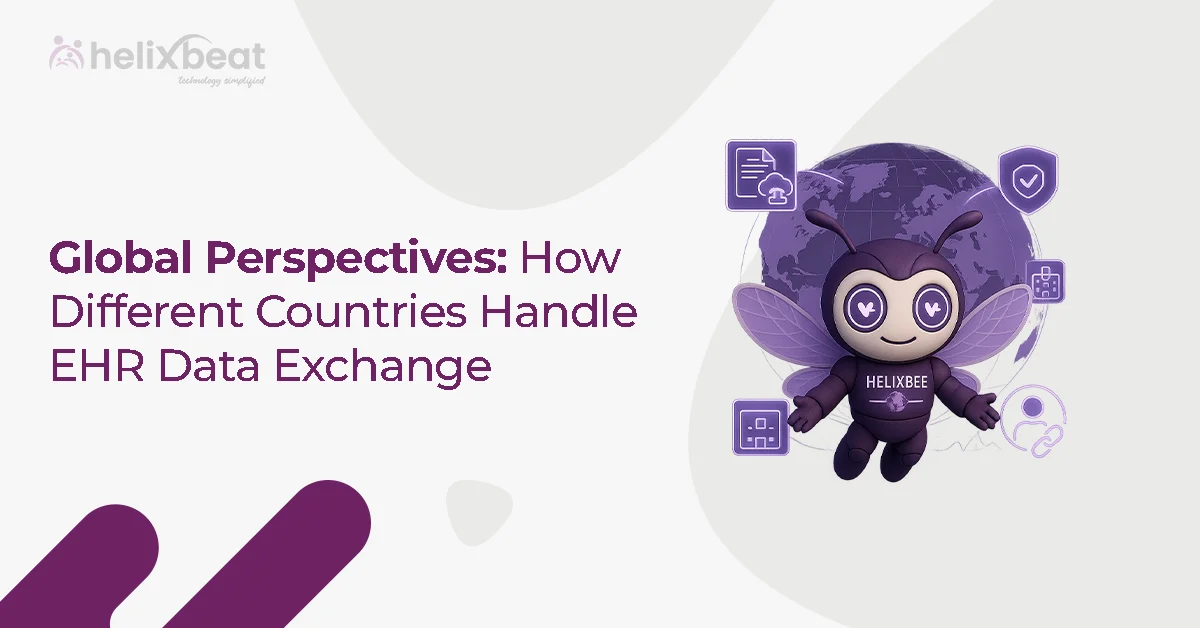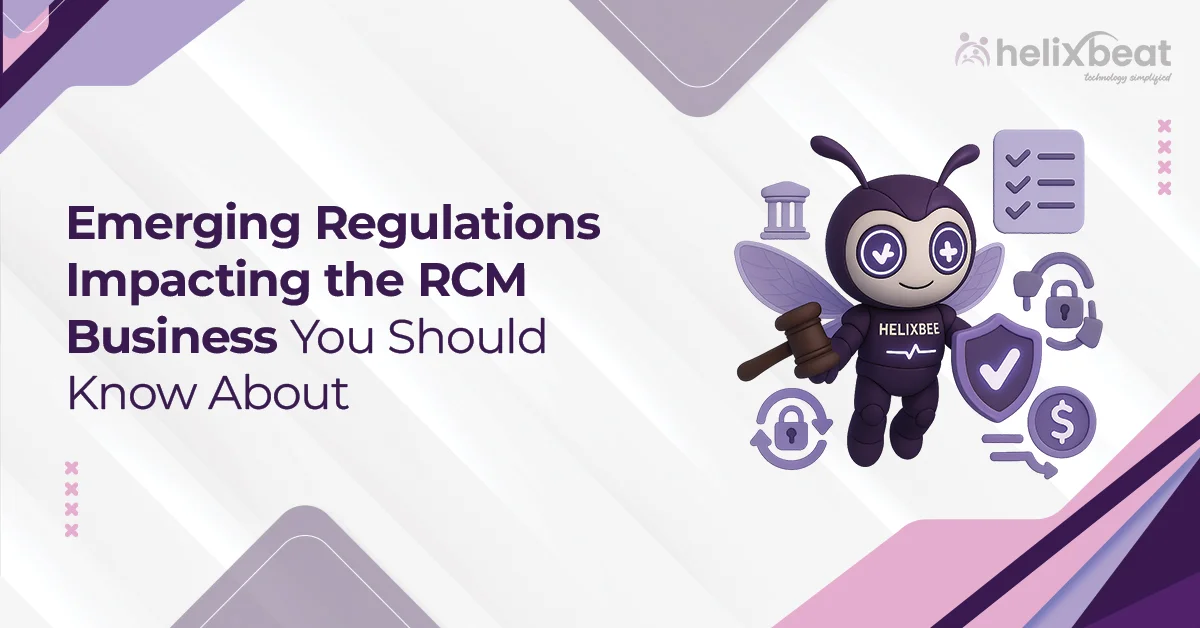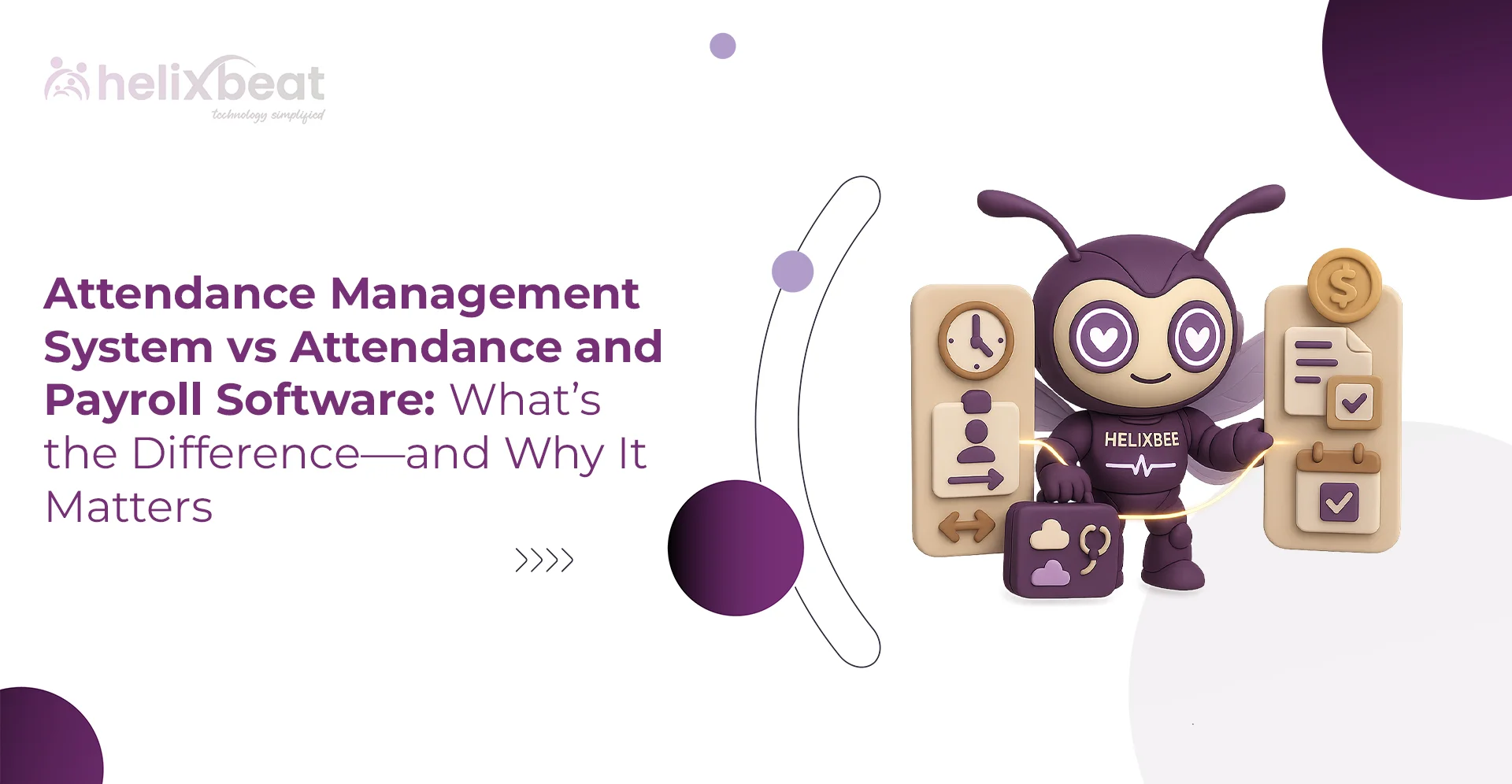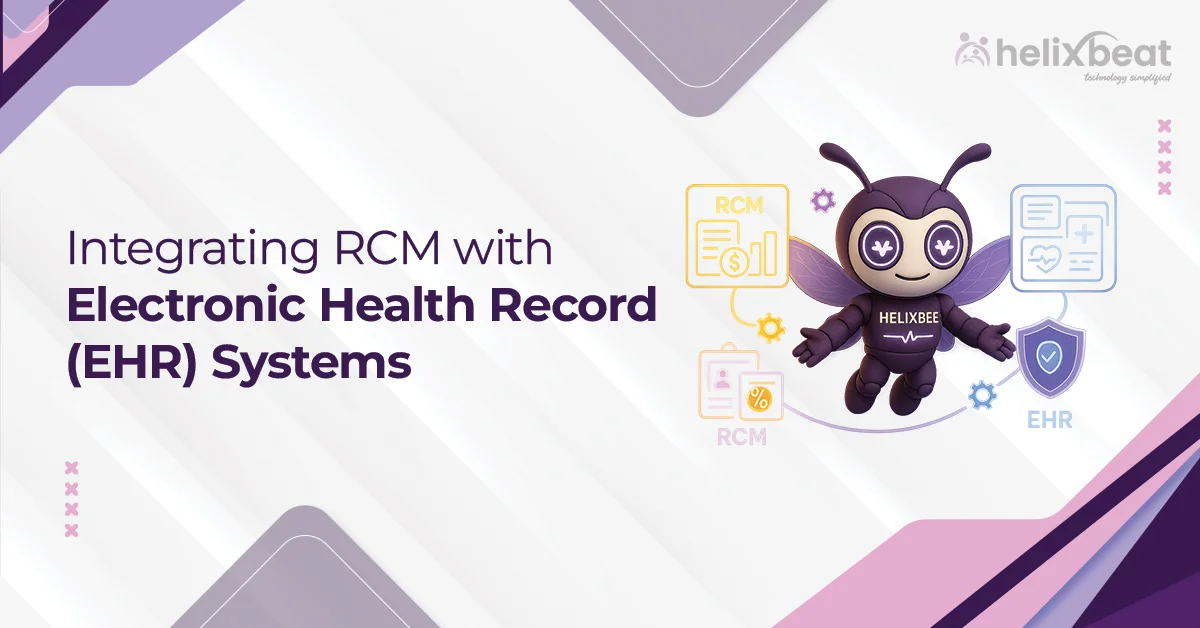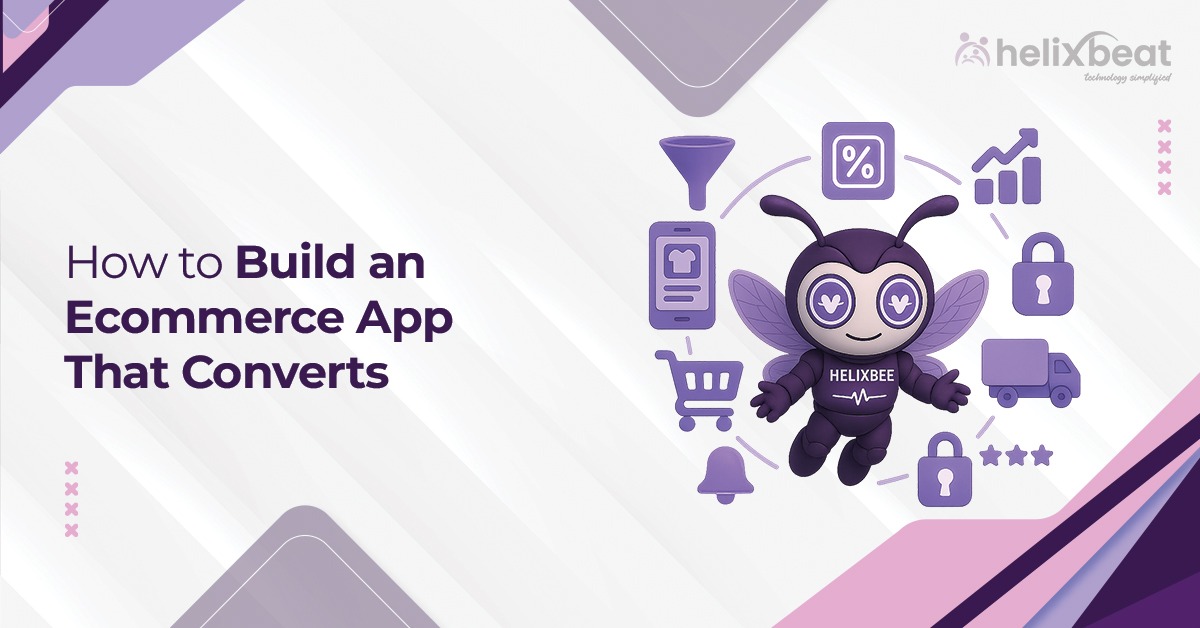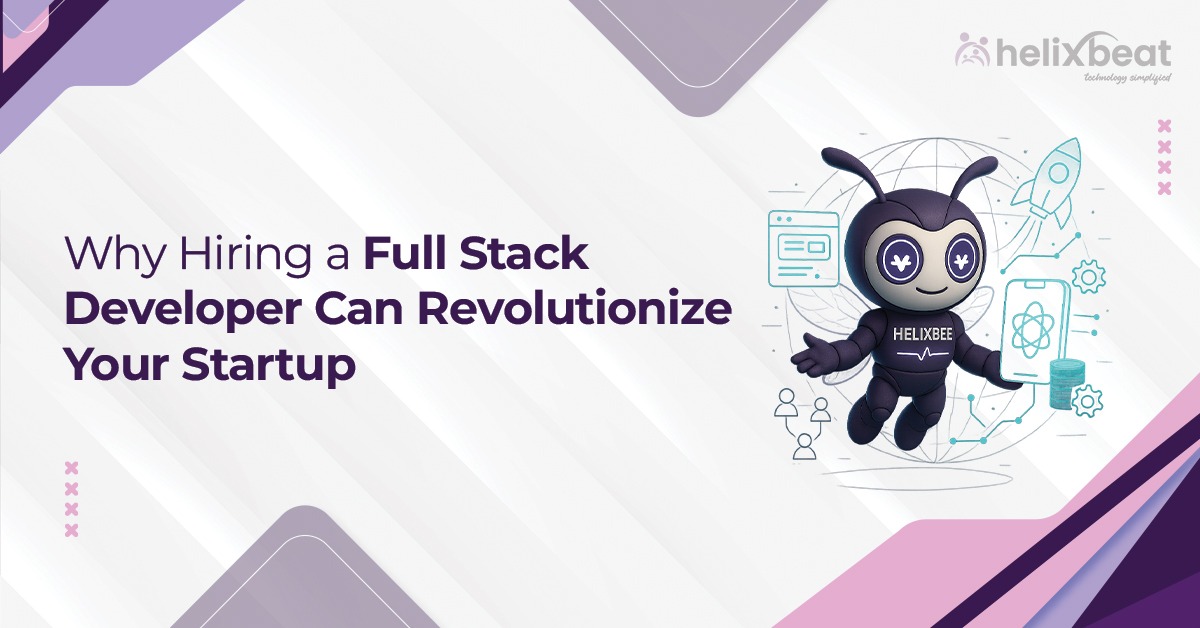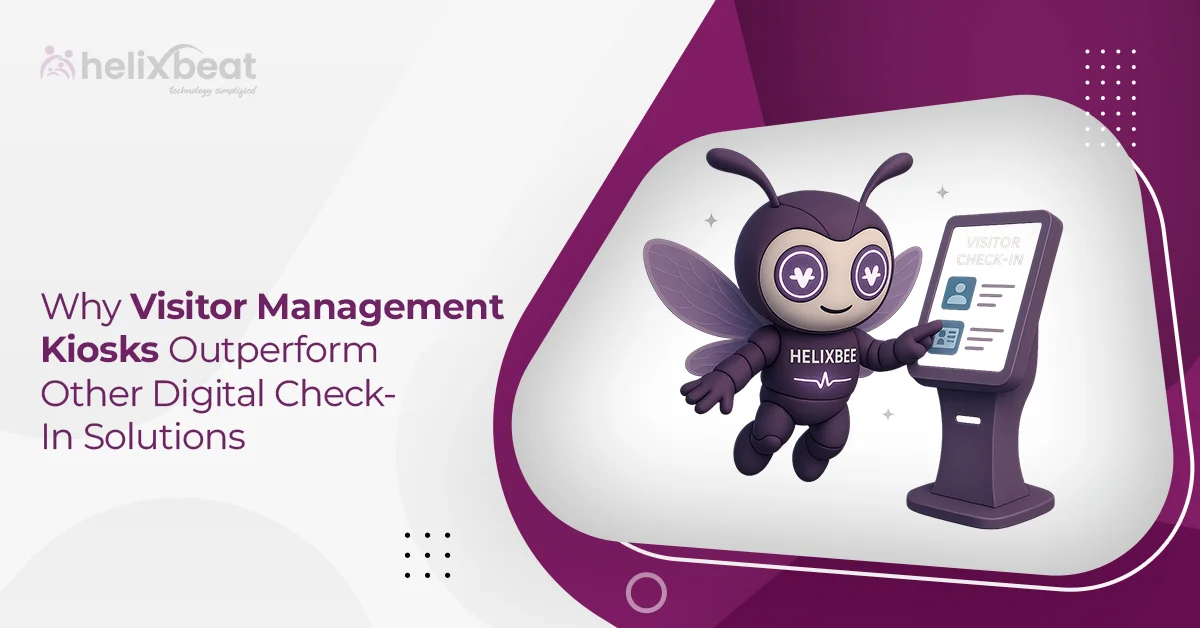In 2025, keeping your SaaS app fast and reliable is more important to compete in the market. People expect apps to work smoothly and load quickly. If your app doesn’t meet user expectations, it can frustrate users and affect your brand reputation.
But making sure your app stays fast is not just about having great features. It’s about making performance a priority and constantly working to improve it. By focusing on these areas, you can make sure your app stays reliable and responsive, no matter how much it grows.
In this blog, we’ll walk you through simple but effective ways to keep your SaaS app running smoothly. These strategies will help you keep your users happy and make sure that your app performs well in 2025.
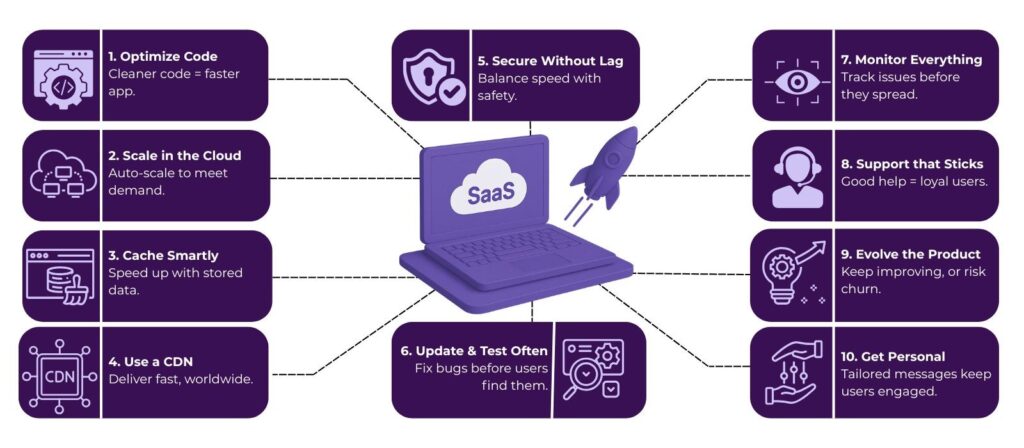
Table of Contents
Overview of SaaS Development
SaaS (Software as a Service) development involves creating software applications hosted on the cloud and accessed via the Internet. Unlike traditional software, SaaS apps are subscription-based and don’t require local installation.
The development process focuses on building scalable, secure applications that provide an excellent user experience and can easily integrate with other systems. Key aspects include selecting the right architecture, ensuring data security, and offering continuous updates.
SaaS is popular for its flexibility, cost-effectiveness, and accessibility, allowing businesses to deliver value to users while avoiding the complexities of traditional software management.
Best Ways to Keep Your SaaS App Fast and Reliable in 2025
Making sure your SaaS app remains fast and reliable is crucial for user satisfaction and business growth. Below are some of the best strategies, along with examples, to help you optimize your app’s performance in 2025.
1. Optimize Your Code
Why it matters: Clean, efficient code leads to faster execution, fewer bugs, and better overall app performance. It also reduces the load on your server, making it easier to handle higher traffic without compromising speed.
What you can do:
- Avoid unnecessary code or complex algorithms that can slow down your app.
- Regularly refactor your code to remove redundancies and improve efficiency.
Example: A SaaS app that processes payments could optimize its code by reducing the number of database calls per transaction, resulting in faster transaction times and improved user experience.
2. Leverage Cloud Scalability
Why it matters: Scalability ensures that your app can handle increased traffic without slowing down or crashing. It allows you to grow your user base without worrying about performance bottlenecks.
What you can do:
- Use cloud services like AWS, Azure, or Google Cloud that offer auto-scaling features to adjust resources based on demand.
- Implement a multi-cloud approach to avoid dependency on a single provider.
Example: A project management SaaS tool can scale its cloud infrastructure during peak times, such as the beginning of the month when many users access the app to review tasks and deadlines.
3. Implement Caching Strategies
Why it matters: Caching stores frequently accessed data closer to the user, reducing load times and improving app performance. It helps alleviate pressure on your servers, especially during high-traffic periods.
What you can do:
- Use in-memory data stores like Redis or Memcached to cache the results of common queries.
- Cache static resources such as images, scripts, and stylesheets to speed up load times.
Example: An e-commerce SaaS app could cache product details, reducing database hits for every user who views the same products, thus improving loading speed.
4. Use a Content Delivery Network (CDN)
Why it matters: CDNs distribute content across multiple servers globally, reducing latency and ensuring fast load times for users in different regions. This means a smoother experience for users, no matter where they are located.
What you can do:
- Implement a CDN like Cloudflare or Akamai to serve static assets like images, videos, and stylesheets from the closest server to the user.
Example: A video streaming SaaS platform can use a CDN to stream content smoothly to users worldwide, minimizing buffering times.
5. Prioritize Security Without Sacrificing Performance
Why it matters: Security is vital, but it shouldn’t slow down your app. Balancing helps maintain smooth and safe user experiences while protecting sensitive data from threats.
What you can do:
- Use lightweight encryption methods such as TLS for secure data transmission.
- Implement secure coding practices that don’t heavily impact performance.
Example: A SaaS customer relationship management (CRM) tool can use end-to-end encryption for sensitive customer data while ensuring that encryption methods don’t slow down data retrieval or storage.
6. Regularly Update and Test Your App
Why it matters: Regular updates help your app stay optimized, fix bugs, and keep up with evolving technology. Continuous testing ensures that performance doesn’t degrade as new features are added.
What you can do:
- Schedule regular performance testing using tools like LoadRunner or JMeter.
- Implement continuous integration and continuous deployment (CI/CD) practices to ensure seamless updates.
Example: A SaaS analytics platform might test new features with a subset of users before rolling them out globally, ensuring there’s no performance hit from new code.
7. Monitor and Analyze Performance Metrics
Why it matters: Constant monitoring helps you identify and fix performance issues before they affect users. It provides insights into areas of improvement, helping you optimize your app over time.
What you can do:
- Use tools like New Relic, Datadog, or Grafana to track metrics like response time, error rates, and server health.
- Set up alerts for sudden spikes in traffic or errors, allowing you to respond quickly.
Example: A SaaS invoicing app can monitor response times for generating invoices, and if it detects slow performance during peak usage, it can trigger alerts to resolve the issue promptly.
Implementing these strategies will improve user experience, improve customer retention, and position your app for long-term success.
How to Retain Customers in Your SaaS Business
1. Provide Excellent Customer Support
Customer support is a key factor in retention. 88% of customers say that a positive customer service experience makes them more likely to purchase again. Offering fast, helpful, and responsive support can prevent churn and enhance customer satisfaction, leading to stronger long-term relationships.
2. Focus on Regular Updates and Product Improvements
Continuously updating your product based on customer feedback is essential for retention. According to a survey, 52% of SaaS users would leave a service if it didn’t continue to evolve or improve. Regularly introducing new features and addressing pain points helps maintain customer engagement and shows that you are invested in their success.
3. Engage Through Personalized Communication
Personalization can increase retention rates by up to 50%. Customizing emails, notifications, and content to individual customer needs and usage patterns helps build a deeper connection with your users. When customers feel that the product is customized to their specific needs, they are more likely to stay loyal and become advocates for your brand.
Final Thoughts
Keeping your SaaS app fast, reliable, and aligned with your customer needs helps you to grow your business and maintain a high customer retention rate.
At Helixbeat, we offer expert SaaS development services that focus on building scalable, high-performance solutions customized to your business needs.
With a strong track record of successful SaaS projects, Helixbeat ensures your app stays optimized for both speed and reliability. Our dedicated team offers exceptional support to help your SaaS business grow.
Choose Helixbeat to create a solution that not only meets your immediate goals but also supports long-term customer retention and business success.
FAQ:
1. What are SaaS tools?
SaaS tools are software applications provided via the Internet, allowing users to access and use them without installation or maintenance, typically on a subscription basis.
2. Does SaaS have a future?
Yes, SaaS is expected to continue growing as businesses increasingly shift to the cloud due to its scalability, flexibility, and cost-effectiveness.
3. How reliable is SaaS?
SaaS is generally very reliable, especially when provided by top-tier providers who offer high uptime, security, and regular updates.
4. What is the future of AI SaaS?
AI SaaS will continue to grow, incorporating features like predictive analytics, automation, and enhanced user experiences, enabling businesses to make smarter, data-driven decisions.
5. What is the long-term value of SaaS?
SaaS offers long-term value by providing scalable, cost-effective solutions that evolve with business needs, while the subscription model ensures ongoing revenue and continuous software improvements.
6. What is the life cycle of SaaS?
The SaaS life cycle includes development, launch, growth, maturity, and, eventually, evolution or decline as the software adapts or becomes outdated.



